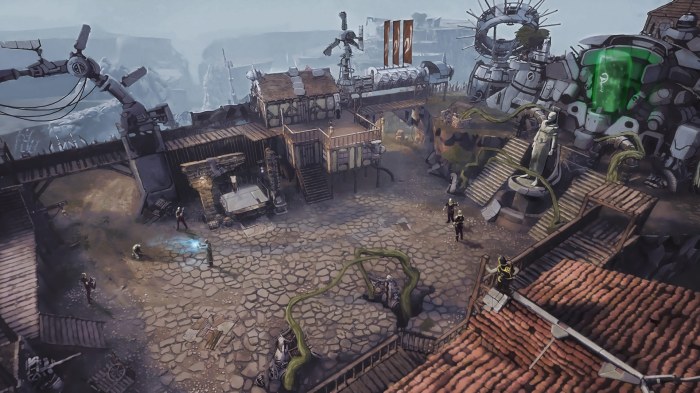What is an isometric rpg – Embark on an isometric adventure as we delve into the captivating world of isometric RPGs, where strategy, exploration, and character development intertwine to create an immersive gaming experience. Discover the unique visual perspective, engaging gameplay mechanics, and rich history that make isometric RPGs a beloved subgenre.
From their origins in classic dungeon crawlers to modern masterpieces, isometric RPGs have evolved significantly, offering a diverse range of experiences. Join us as we explore the defining characteristics, influential titles, and current trends that shape this captivating genre.
What is an Isometric RPG?
Isometric RPGs are a subgenre of role-playing games (RPGs) that use an isometric perspective. This perspective places the camera at an angle that allows players to view the game world from above, creating a three-dimensional effect while maintaining a two-dimensional playfield.
Isometric RPGs are known for their strategic gameplay, emphasis on exploration, and character development. They often feature a party of characters who travel through a world, fighting enemies, completing quests, and developing their skills and abilities.
Gameplay Elements of Isometric RPGs

Isometric RPGs typically feature a number of common gameplay elements, including:
- Exploration:Players are free to explore the game world, discovering new areas, hidden treasures, and secrets.
- Combat:Players engage in turn-based or real-time combat with enemies. Combat often involves using a variety of weapons, spells, and abilities.
- Character Development:Players can develop their characters by increasing their stats, learning new skills, and acquiring new equipment.
Visual Characteristics of Isometric RPGs

The isometric perspective is a key visual characteristic of isometric RPGs. This perspective allows players to see the game world from a three-dimensional angle, while still maintaining a two-dimensional playfield.
The isometric perspective provides a number of advantages for gameplay. It allows players to see more of the game world at once, and it makes it easier to navigate and explore. The isometric perspective also creates a sense of depth and immersion, making the game world feel more real and alive.
Historical Evolution of Isometric RPGs
The origins of isometric RPGs can be traced back to the early days of computer gaming. One of the first isometric RPGs was Dungeon Master, which was released in 1987. Dungeon Master was a groundbreaking game that introduced many of the features that are now common in isometric RPGs, such as turn-based combat, character development, and exploration.
In the years since Dungeon Master, isometric RPGs have become one of the most popular subgenres of RPGs. Some of the most popular isometric RPGs include the Baldur’s Gate series, the Fallout series, and the Diablo series.
Comparison to Other RPG Subgenres
Isometric RPGs are one of many different subgenres of RPGs. Other popular subgenres include first-person RPGs, action RPGs, and massively multiplayer online RPGs (MMORPGs).
Isometric RPGs offer a unique blend of strategy, exploration, and character development. They are a great choice for players who enjoy games that are challenging, rewarding, and immersive.
Current Trends and Innovations in Isometric RPGs

The isometric RPG genre is constantly evolving. Some of the latest trends and innovations in isometric RPGs include:
- Real-time combat:More and more isometric RPGs are moving away from turn-based combat and adopting real-time combat systems.
- Open worlds:Isometric RPGs are increasingly featuring large, open worlds that players can explore at their own pace.
- Multiplayer:Isometric RPGs are becoming more social, with many games now offering multiplayer modes.
Popular Questions: What Is An Isometric Rpg
What defines an isometric RPG?
Isometric RPGs are characterized by their unique visual perspective, which presents the game world from a tilted, three-dimensional angle. This perspective allows for a wider field of view and enhances immersion, making it ideal for exploration and tactical combat.
What are some key gameplay elements of isometric RPGs?
Isometric RPGs typically feature a combination of exploration, combat, and character development. Players control a party of characters, navigating through diverse environments, engaging in turn-based or real-time combat, and developing their characters’ skills and abilities.
How have isometric RPGs evolved over time?
Isometric RPGs have evolved significantly since their early roots in the 1980s. Advancements in technology have led to more detailed graphics, complex storylines, and sophisticated gameplay mechanics. Modern isometric RPGs often incorporate elements from other genres, such as action and adventure.
